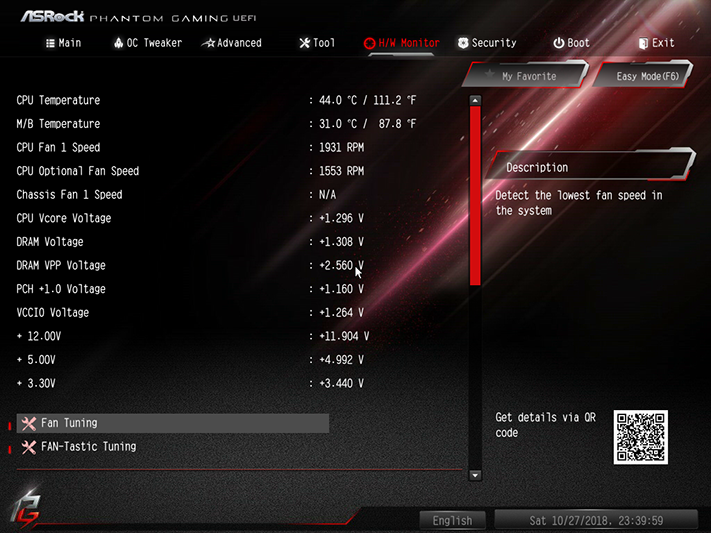ASRock Z390 Phantom Gaming-ITX/ac Review: ITX Excellence
Why you can trust Tom's Hardware
Software and Firmware
Following the tradition it set with Fatal1ty F-Stream, ASRock’s A-Tuning gets yet a third name and color scheme with the Phantom Gaming Tuning app that's included with this board. It still bases its auto-tuning algorithm on existing overclocks, and the board lacks an EZ OC profile for our CPU. Therefore the app's Start button is inactive by default. Manual tuning from the board's OC Tweaker menu still works, however.
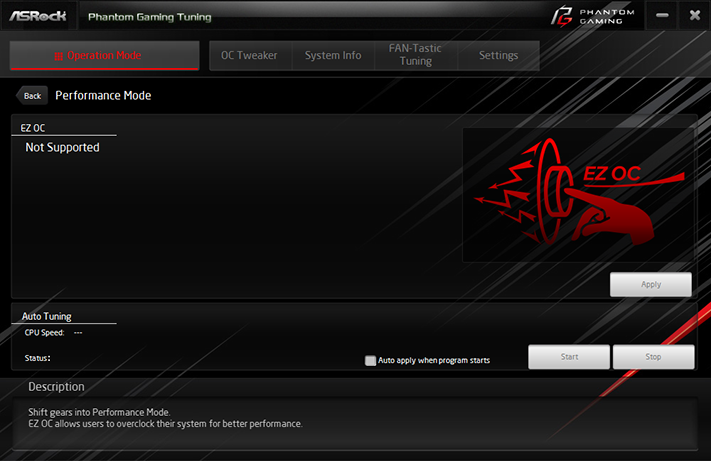
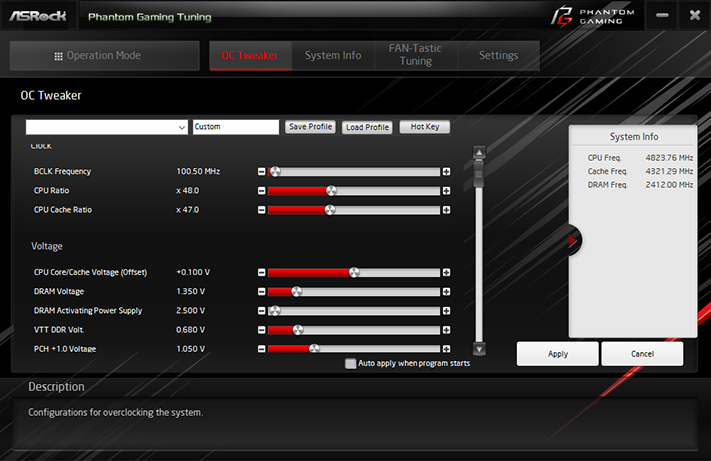
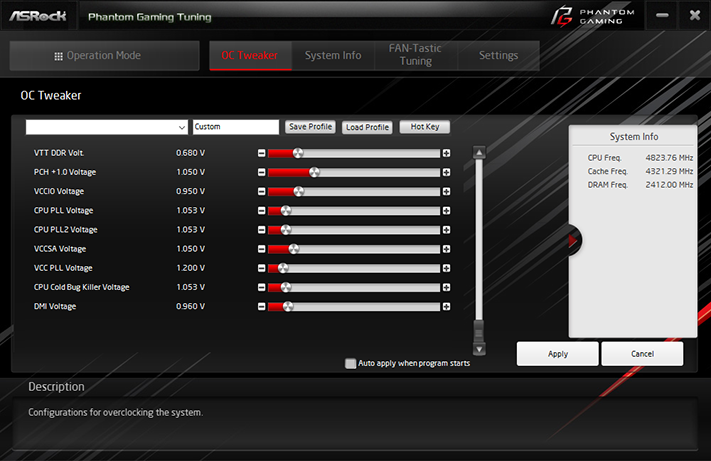
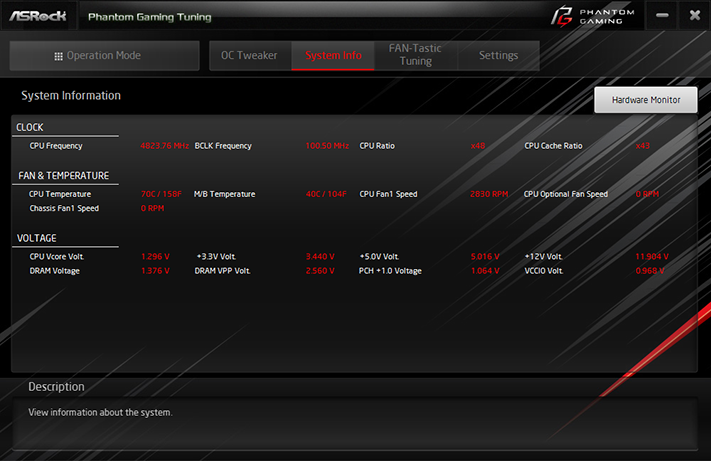
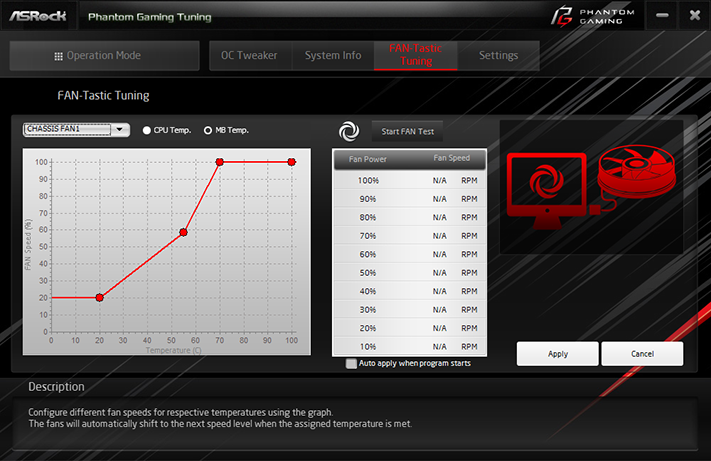
The Z390 Phantom Gaming-ITX/ac uses a 1.35V DRAM setting as default, even though our memory specified 1.20V for its DDR4-2400 default configuration. Phantom Gaming Tuning’s System Info page read a voltage of 1.376 to 1.384V, so we checked and found that 1.384V was closer to reality. In fact, we had to drop the firmware setting to 1.310V just to get a range of 1.348V to 1.352V, according to our voltmeter.


ASRock Polychrome RGB isn’t exactly configured to show the available lighting of this motherboard model, and instead wrongly labels the three LEDs on the underside of its bottom edge as being on the “PCH Heatsink.” The lighting controls work, but all three LEDs are on a single color channel, so rainbow effects aren’t available. The software is also compatible with our RGB memory, but clicking the “Sync” button drops color pattern options to “Breath”, “Blink”, and “Static” single-color modes.
Firmware
Like other ASRock boards, the Z390 Phantom Gaming-ITX/ac's UEFI defaults to its EZ Mode interface, uses the keyboard’s F7 function to switch into Advanced mode, and includes a setting under the Advanced mode Advanced menu to change the default GUI. While EZ Mode allows changing from default to XMP memory settings, boot order, fan profile, and even has a “Tools” menu for firmware update modes, you’ll need to switch to Advanced Mode to do anything as complex as disabling the onboard RGB lighting. Moreover, Advanced Mode includes ASRock’s OC Tweaker menu, with CPU, DRAM, and Voltage settings, in addition to five user profiles for which a set of custom CPU, DRAM, and Voltage settings can be stored. Oh, and if onboard storage somehow isn’t enough, users can transfer these profiles to a USB flash drive and share them with their friends.
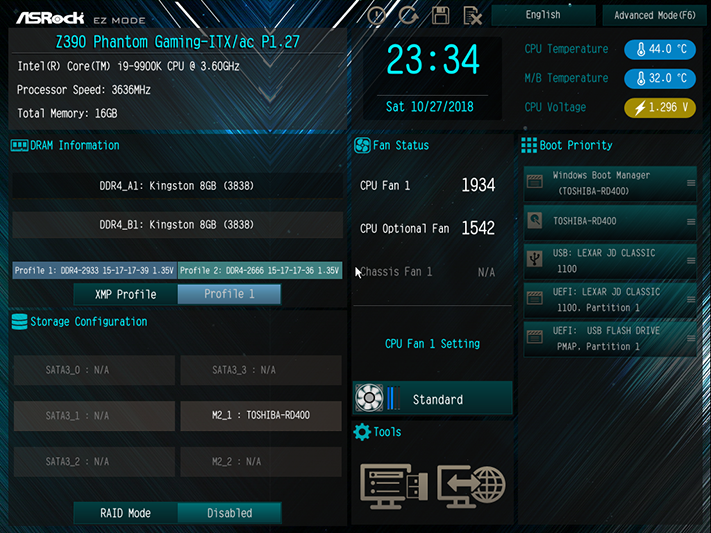
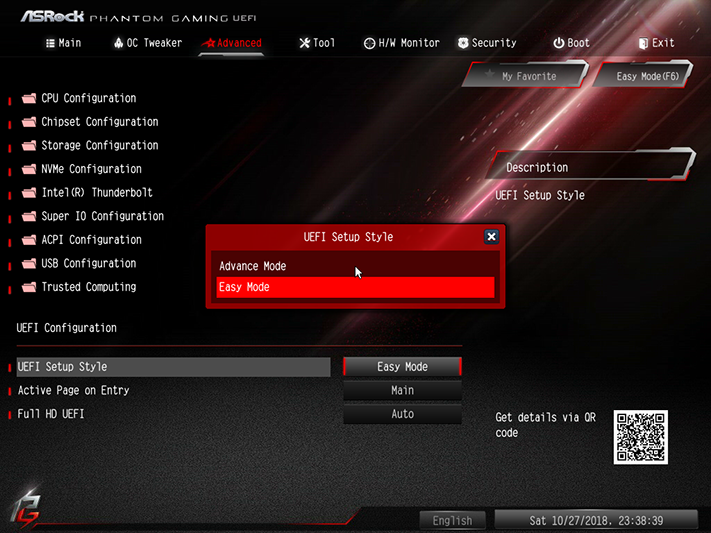
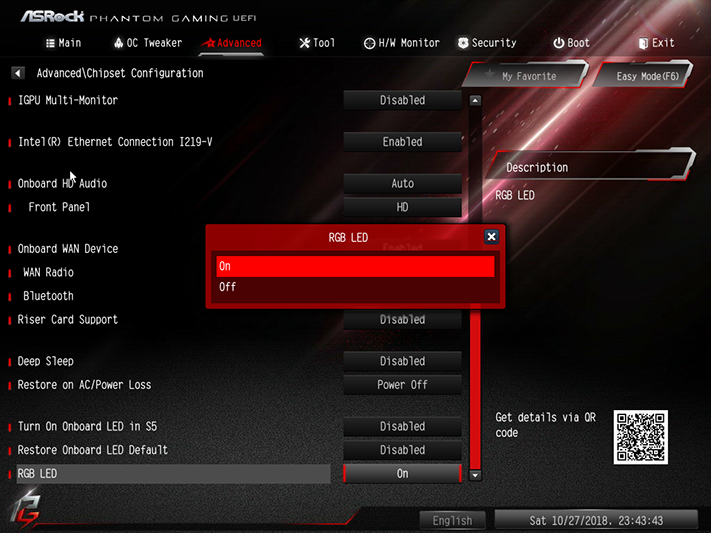
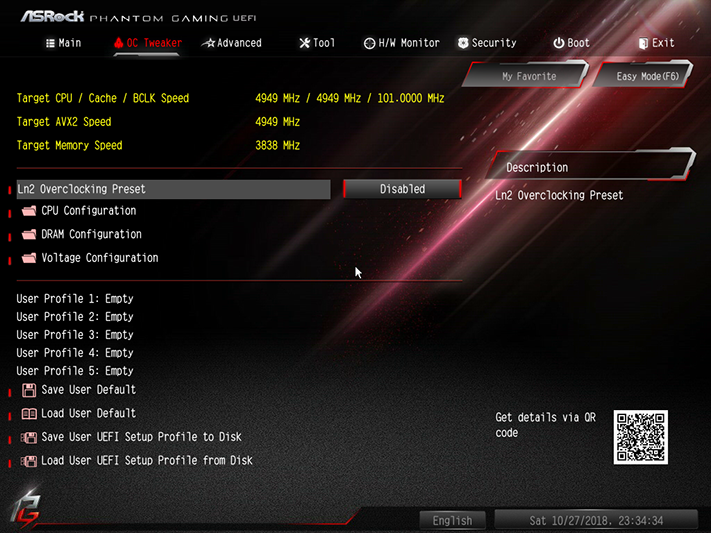
Our overclocking begins with a CPU ratio of 49X at a BCLK of 101 MHz. That’s the same 4,949 MHz fixed clock as we’ve reached on other boards, and a 5% overclock from the Core i9-9900K CPU’s reference 4.70 GHz all-cores-loaded Turbo Boost ratio. Of course it’s still a bit less than the 5GHz available on up to two cores under light loads by default.
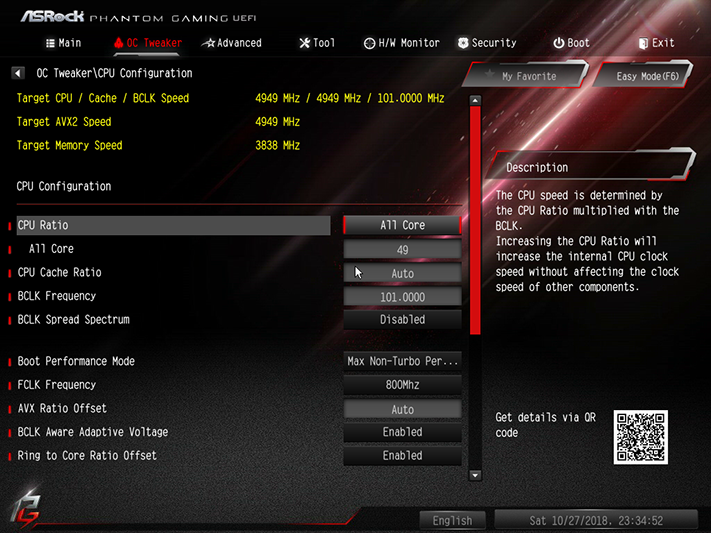

The Z390 Phantom Gaming-ITX/ac was the first board to give us hope for a 5.0 GHz full-load overclock using a mere 1.30V. It did manage to hold up for about 40 minutes before we saw a blue-screen error. Dropping to 4,998MHz by using 49 x 102 MHz just wasn’t enough of a decrease to get past the same (roughly 40 minute) crash time, despite several attempts.
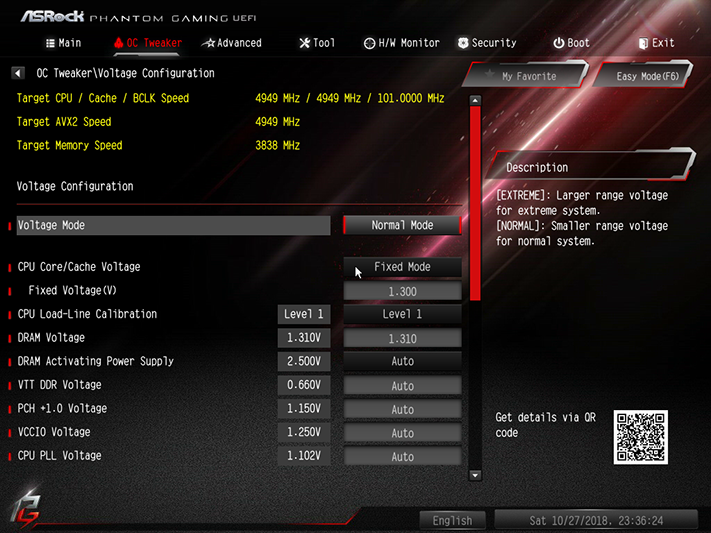
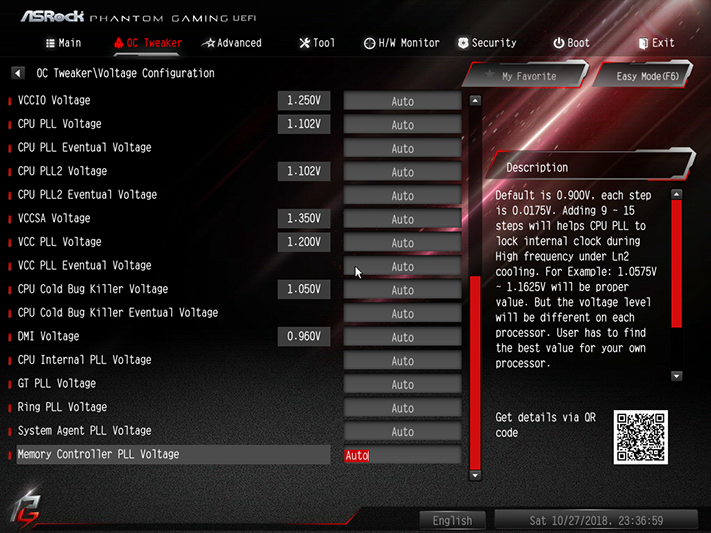
“More voltage” is of course the trick to achieving overclocking stability, which is why Intel allows this CPU to reach up to 1.36V when using its two-core 5.0 GHz “Turbo Boost” setting. But keeping all eight cores cool at such high voltage levels is extremely difficult. We chose 1.30V to keep temperatures in check, and while our 240mm closed-loop cooler has a little extra capacity for higher voltage, we’re not changing our standards to accommodate one board. Maintaining that voltage under changing loads was as easy as keeping the “Level 1” CPU Load-Line Calibration setting that the board automatically applied after we set the multiplier and core voltage.
Get Tom's Hardware's best news and in-depth reviews, straight to your inbox.
Since there is no such thing as a perfect 1.350V, we’ve chosen a DRAM voltage limit of 1.355V for our memory overclocking comparison and prevent cheating via higher voltages by measuring the slots with a voltmeter. The Z390 Phantom Gaming-ITX/ac pushed an incredible 40mV over the set voltage. Worse still was that the extra voltage was obscured by a fictitious reading within the board's H/W Monitor report. The “1.308V” report shown above corresponds to a measured 1.348 to 1.352 volts at the slot while using the board’s 1.310V setting.




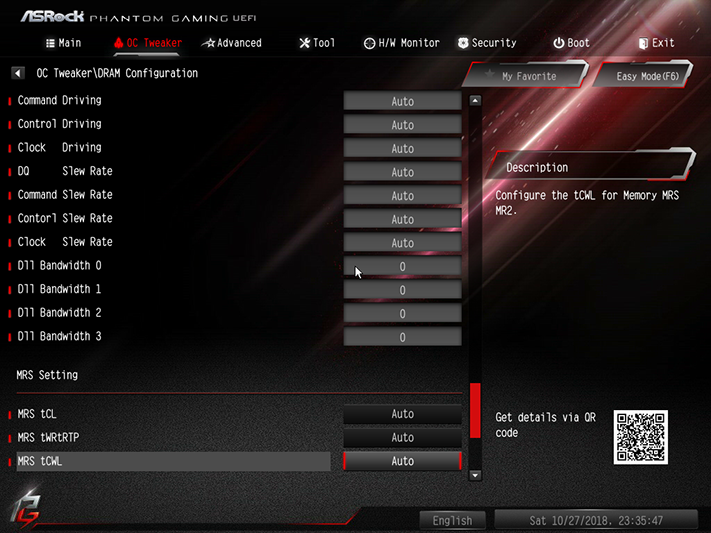
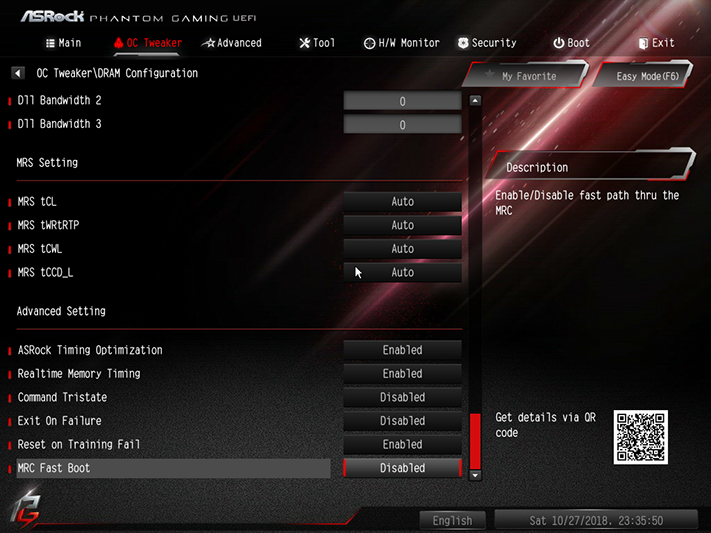

All that said, the Z390 Phantom Gaming-ITX/ac didn’t need the extra voltage to get a good data rate: Even after correcting its over-voltage, the board pushed our DDR4-2933 to DDR4-3818. But we’re actively trying to discourage a never-ending cycle of motherboard manufacturers sneaking increasingly greater voltage levels into their DIMM slots, only to have memory manufacturers respond with modules that need the extra voltage, prompting motherboard manufacturers to use even more voltage until the CPU’s integrated memory controllers eventually gives way at so-called “stock” settings.
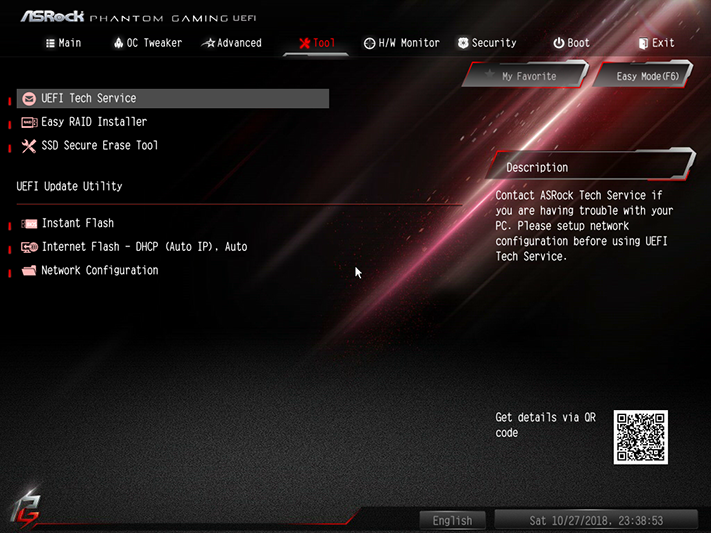
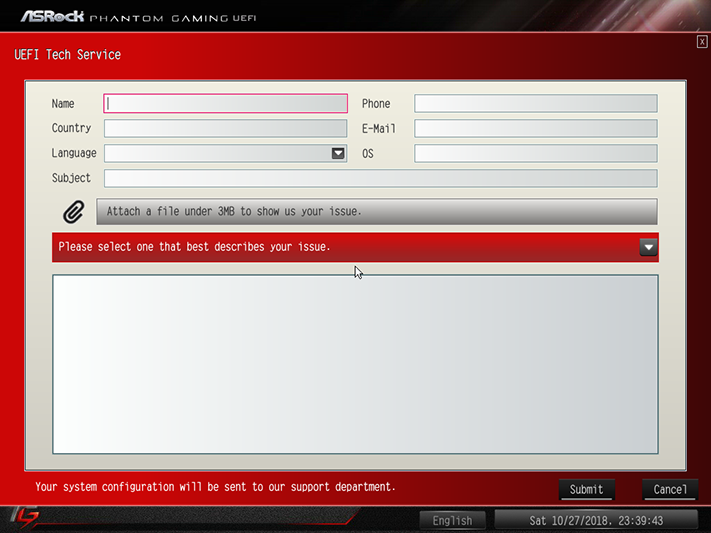
ASRock’s Tool menu includes an outgoing email client for tech support messages, a tool for copying RAID drivers to a thumb drive, an SSD Secure erase tool, an Instant Flash firmware update mode, Internet Flash firmware download mode, and Network Configuration to help users reach the Internet Flash server prior to installing an OS. Internet Flash did reach the server this time and return a report of “no update available,” but a check of the motherboard’s webpage showed that an update was indeed available. After downloading the update manually on another PC, we used Instant Flash to install it, despite the Internet Flash feature insisting it didn't exist.
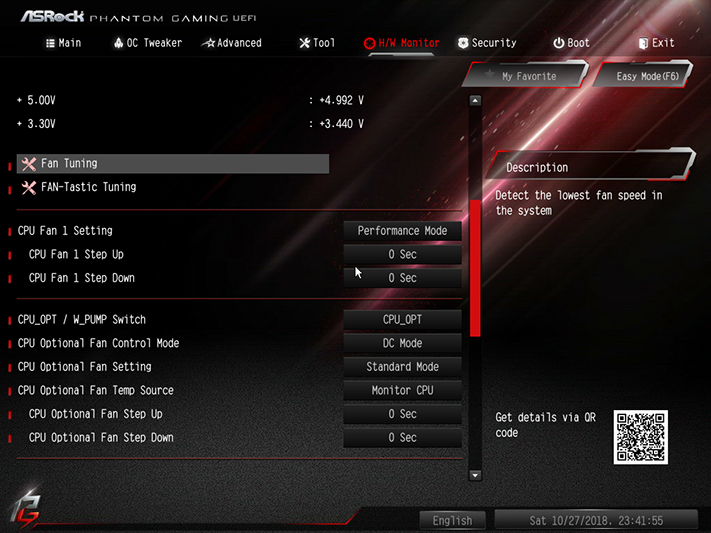

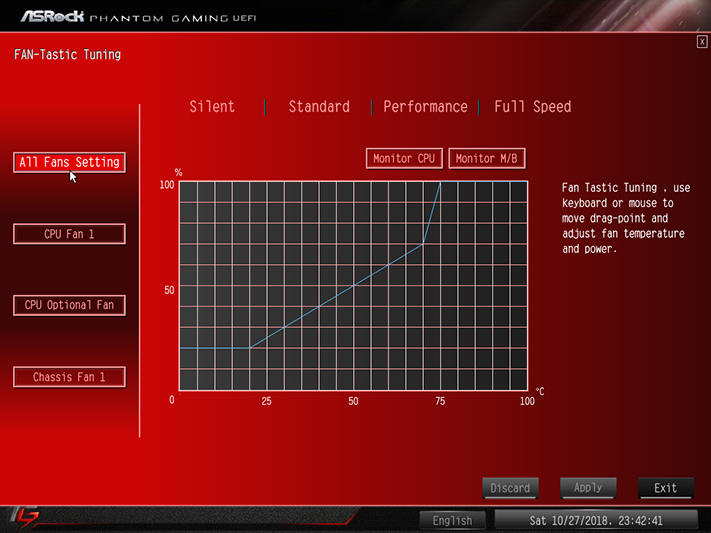
Only one of the three Z390 Phantom Gaming-ITX/ac fan headers provides voltage-based RPM control. Profiles can be manually configured by percentage or adjusted graphically under the FAN-Tastic Tuning sub-menu, and factory-programmed settings can be modified to match your specific fan’s profile using the Fan Tuning algorithm.
MORE: Best Motherboards
MORE: How To Choose A Motherboard
MORE: All Motherboard Content
-
xidharta I love these reviews of itx boards, I would like to see gigabyte and msi ixt z390, which have a better price, many thanks!Reply -
Crashman Reply
"Everyone" does it, this time it was more egregious than the typical 15-25mV. I'm currently writing up a board that's only 7mV over. Seven. That's incredibly closer to spec than most competing products. Heck, I might just give the new board kudos for ONLY being 7mV over-spec.21470029 said:It'd be nice to see some followup with asrock regarding the dram over voltage...
-
johnphilips I would love to see a roundup between all z390 itx boards, specially the overclocking part.Reply -
eddygonewild Why tom's hardware modifies pictures of reviews with extreme contrast. I can't see under the heatsink fins. Its totally useless, people are coming here to decide, not look at flashy eyecandy.Reply -
Crashman Reply
The images match the profile of my monitor. Maybe I should be using a different monitor?21511630 said:Why tom's hardware modifies pictures of reviews with extreme contrast. I can't see under the heatsink fins. Its totally useless, people are coming here to decide, not look at flashy eyecandy.
-
ioanbordei Thunderbolt port is not working at full speed? 40Gb/s ? Why is running at half (20Gb/s) ?Reply -
Crashman Reply
Because it's using a cheaper PCIe x2 controller.21528908 said:Thunderbolt port is not working at full speed? 40Gb/s ? Why is running at half (20Gb/s) ?
